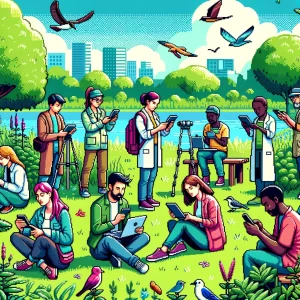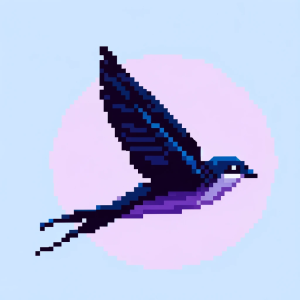
The Migration Marvel: Tracking Monarch Butterflies with Modern Technology
The monarch butterfly, recognized for its vibrant orange and black wings, embarks on one of the most extraordinary migrations in the insect world. Every year, millions of these butterflies travel thousands of miles from as far north as Canada to their overwintering sites in Mexico, a journey that has perplexed scientists and enthusiasts for decades. Recent technological advancements have brought us closer to uncovering the secrets behind this awe-inspiring natural phenomenon.
The Innovation: Tracking Monarchs with Tiny Sensors
The New York Times recently reported a remarkable breakthrough in tracking monarch butterflies during their migration. Scientists have employed tiny sensors to follow individual monarchs, providing detailed insights into their migratory routes and behaviors. This approach revolutionizes our understanding of monarch migration, allowing researchers to monitor the butterflies’ progress in real time.
Several platforms, such as Monarch Watch and the Monarch Joint Venture, are actively involved in tracking and analyzing these migratory patterns. They use a combination of crowdsourcing and cutting-edge technology to gather data on where and how these butterflies travel, emphasizing citizen scientist participation in conservation efforts.
Technological Tools: A Leap Forward
Notably, the world’s smallest tracking devices have been developed to map the monarchs’ journey with unprecedented accuracy. These devices are compact enough to be carried by a butterfly and provide a wealth of data on migration timing, routes, and environmental conditions. By leveraging this technology, researchers are gaining critical insights into the challenges monarchs face during long-distance travel, including climate change and habitat disruptions.
Human Impact and Conservation Efforts
The data gathered through these technologies underscore the fragility of the monarch butterfly migration. Human-induced threats such as habitat loss, pesticide use, and climate change increasingly jeopardize these butterflies’ migratory success. Initiatives like the interactive maps on butterfly.nwf.org visually depict these migrations and spotlight urgent conservation needs.
Efforts to preserve monarch habitats are crucial in supporting their lifecycle. Conservation associations advocate for the planting of milkweed, the monarch’s primary food source for caterpillars, as a way to sustain population numbers. Moreover, public contributions through citizen science are vital in tracking monarch sightings and providing data for large-scale studies.
The Role of Citizen Science
Citizen scientists play a pivotal role in monitoring and conserving monarch butterflies. Organizations like Journey North collect sighting reports to track monarchs’ progress during their migration. These grassroots efforts, combined with technological innovations, are setting new benchmarks in wildlife conservation.
Conclusion: Embracing Innovation for Conservation
The seamless integration of modern tracking technologies is transforming our understanding of monarch butterfly migration, enabling more effective protection and preservation of these delicate creatures. As we advance in our technological capabilities, the partnership between science and citizen involvement is essential in ensuring that future generations can witness the majestic flight of the monarch butterflies. By using digital tools and community engagement, we are writing a new chapter in conservation that prioritizes awareness and action in safeguarding our natural world.



